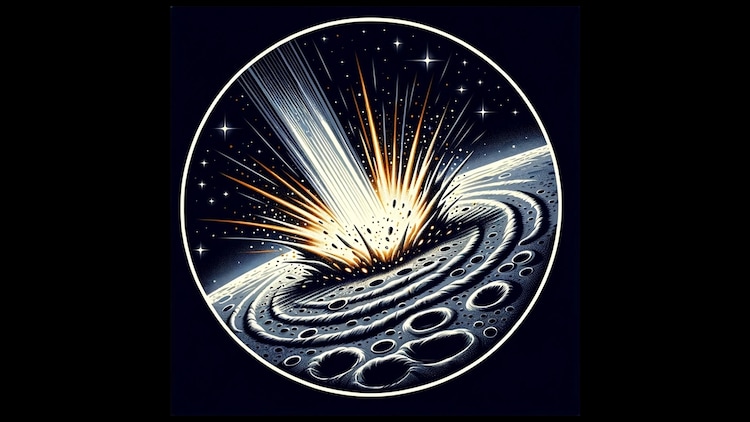The successful soft landing of the Vikram lander and the subsequent data collection underlines India’s growing prowess in space exploration.
- Isro has come out with detailed research
- It reveals what happened during those crucial final moments as Chandrayaan-3 landed
- The displaced material can provide important information about composition of the lunar soil
When India’s Chandrayaan-3 started descending on the Moon on August 23, its Vikram lander began a well-choreographed dance of speed, time, and distance, activating its thrusters to ‘soft land’ on the lunar surface.
Nearly two months after that eventful evening of August 23, the Indian Space Research Organisation (Isro) has come out with detailed research on what happened during those crucial final moments when the Indian spacecraft made history on another celestial body.
What Chandrayaan-3’s Vikram, which was carrying the rover Pragyan, did was kick off a storm of lunar dust on the surface thanks to its landing thrusters, creating a halo on the surface, which is described as ‘ejecta halo.’
WHAT IS EJECTA HALO?
Ejecta halo can be understood by this simple example: When a meteorite or asteroid collides with the Moon’s surface, it creates a crater, and the material excavated from the impact site is referred to as ejecta. The ejecta can be made up of rock, soil, and dust from the lunar surface.
The ejecta from the impact is often thrown out in all directions and can create a distinctive pattern around the crater. This pattern is known as the ejecta halo. It typically consists of debris and material that has been displaced from the impact site and can extend for some distance around the crater.
The appearance and extent of an ejecta halo depend on various factors, including the size and speed of the impacting object, the properties of the lunar surface, and the angle of impact. Studying ejecta halos can provide insights into the dynamics of lunar impacts and the geological history of the Moon.
WHAT DID ISRO FIND?
As the Vikram lander hovered just a few meters above the surface of the Moon on Shiva Shakti Point – the name given to its landing site – the descent thrusters caused a substantial amount of lunar surficial epiregolith material to be ejected.
This resulted in a phenomenon known as a ‘reflectance anomaly’ or ‘ejecta halo’. This term refers to an irregular bright patch that appeared around the lander due to the displaced lunar material.
Using high-resolution panchromatic imagery from the Orbiter High-Resolution Camera (OHRC) of the Chandrayaan-2 orbiter, Indian scientists have revealed that the landing sequence of the Vikram lander displaced lunar epiregolith ejecta over an approximate area of 108.4 square meters.
The images, taken hours before and after the landing event, allowed scientists to map and classify the uncorrelated ‘ejecta halo’ pixels. Scientists estimate that approximately 2.06 tonnes of lunar epiregolith were ejected due to the landing event.
WHY IS THIS DISCOVERY BIG?
This discovery is significant as it provides valuable insights into the behavior of lunar materials during landing events. It also opens up new avenues for research and understanding lunar geology.
The successful soft landing of the Vikram lander and the subsequent data collection underlines India’s growing prowess in space exploration.
Generally, ejecta halos can reveal information about the history of impacts on the Moon. By examining the distribution and characteristics of ejecta halos around lunar craters, scientists can gain insights into the frequency and size of impact events over time.
The displaced material can also provide important information about the composition of the lunar soil and rocks. The movement and distribution of debris across the lunar surface can inform scientists about the regolith (lunar soil) dynamics. This can include processes like the movement of fine dust particles and how material is redistributed on the Moon.
As science begins to flow from the Chandrayaan-3 mission, India is set to reveal, new and previously unknown, details about Earth’s closest neighbour.






